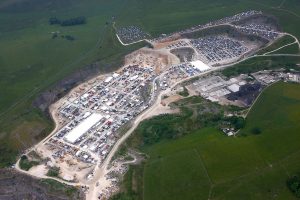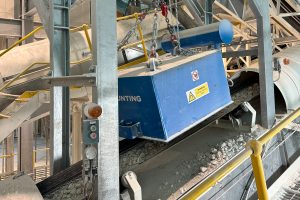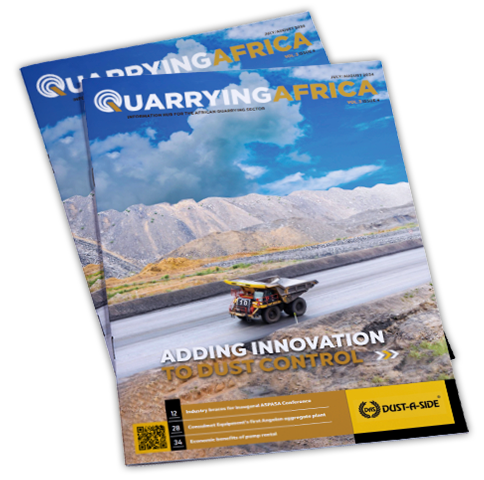While many sectors of the economy have fully recovered from the effects of the Covid-19 pandemic and the subsequent lockdowns, construction activity remains subdued, the latest Afrimat Construction Index finds.
Afrimat, the JSE-listed open pit mining company providing industrial minerals, bulk commodities and construction materials, has released the findings of the Afrimat Construction Index (ACI) for the first quarter of 2022. The ACI is a composite index of the level of activity within the building and construction sectors and is compiled by economist Dr Roelof Botha on behalf of Afrimat.
According to Dr Botha, the lifting of most of the lockdown regulations resulted in a V-shaped recovery for most key sectors of the economy during the second half of 2020, including construction. Since then, several sectors have fully recovered and progressed to a new phase of expansion, but construction sector activity remains subdued.
Although the ACI managed to marginally outperform the gross domestic product (GDP) growth rate during the first quarter of 2022 on a year-on-year basis, the index has returned to its traditional trend of recording a decline between each year’s fourth quarter and the first three months of the following year, recording a drop of 3,5% in the index value (from 118,8 to 114,7).
The only sub-indicator of the ACI that recorded positive growth between the fourth quarter of last year and the first quarter of 2022 was the value of wholesale sales of construction and building materials. However, compared to the first quarter of last year, the picture is considerably more positive, with four of the nine sub-indicators recording positive growth, whilst two others were virtually unchanged (declines of less than 1%).

“Ever since the ACI recorded its highest level yet, namely 143,8 during the third quarter of 2016, a combination of high interest rates, low economic growth, state capture, public sector incompetence and high levels of violent crime have dampened activity in the country’s construction sector,” says Botha.
Compared to the first quarter of 2021, the shining stars of the latest ACI were the volume of building materials produced, the values of buildings completed in the larger municipalities, and wholesale sales of construction and building materials. Since the fourth quarter of last year, the worst performing sub-indicator was labour remuneration, which declined by more than 15%.
“However laudable the policy initiatives announced in this year’s State of the Nation Address and National Budget may be, these will essentially remain only promises unless the stated government objective of closer cooperation with the private sector is translated into active public/private partnerships,” says Botha. “As long as the value of construction works represents only 4% of the country’s infrastructure project pipeline, new jobs will not be created at scale in the construction sector.”
According to Dr Botha, one of the most serious obstacles to the further expansion of construction activity is related to the prevalence of intimidation, extortion and violence on construction sites, which has reached crisis levels.
The industry is also having to cope with higher interest rates. A combination of global supply-side constraints and record high levels for energy commodities, especially oil, has fuelled the highest global inflation rates in more than 50 years. “The negative impact of higher interest rates is already being felt in a decline, in real terms, of average house prices in South Africa and also in the value of building plans passed by the larger municipalities.”
One positive aspect is the fact that South Africa’s public finances are in good shape, with the public debt/GDP ratio having stabilised. Prominent international credit rating agencies have already acknowledged National Treasury’s sound management of the country’s fiscal affairs by upgrading the outlook for South Africa’s government bonds. “There is enough money in the kitty to significantly expand construction sector activity, but government’s promises of closer cooperation with the private sector needs to be fulfilled post-haste for this to become a reality.”
Afrimat’s CEO, Andries van Heerden, says that the group’s diversification strategy is truly coming to the fore right now, particularly given the excellent cash generation from the Bulk Commodities segment. Furthermore, a recovery to pre-Covid levels in the Construction Materials and Industrial Minerals segments shows that there continues to be construction activity in the country, although possibly on a slightly smaller scale, which suites the Afrimat efficiency model. The group’s diversification positioning is also being driven by additional commodities coming on stream.
Despite data in this ACI showing a lower level of general construction activity, Afrimat has purposely positioned itself to work in the smaller, more consistent construction materials supply market, supported by strategically positioned quarries, mines and material distribution.
“What is really exciting for us, aside from our new projects in the mining space, are the various ‘green’ initiatives we are investing in, the most recent of which is the granting of a licence to plant hemp. This product is extremely versatile and is an excellent counterbalance to carbon emissions. Parts of the plant is also used to manufacture building blocks with a negative carbon footprint.”
Van Heerden concludes by saying that in this traditional construction and architectural space, new and innovative thinking, combined with a conscious need by builders, homeowners and office building owners to be more environmentally responsible, is driving demand for the group’s products.





![Data from the World Risk Poll shows that one in five (21%) people in mining and quarrying occupations have experienced harm at work in the past two years. [Photo by Shane McLendon on Unsplash]](https://quarryingafrica.com/wp-content/uploads/2024/10/shane-mclendon-89hUOLtVfoI-unsplash-300x225.jpg)
